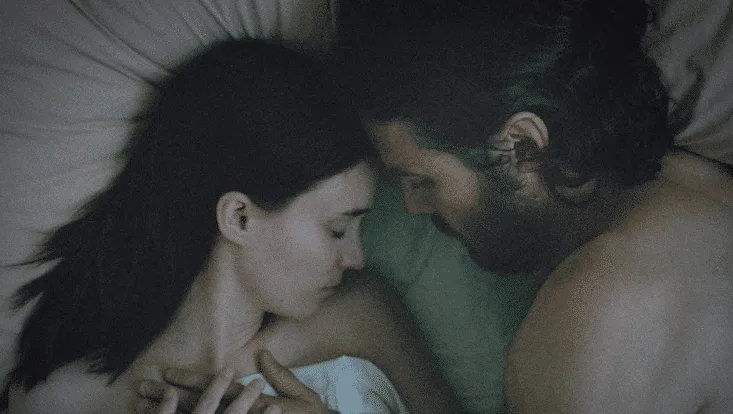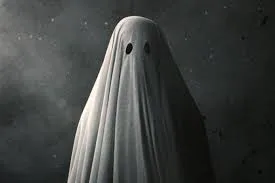
The nameless couple at the heart of the story (played by Casey Affleck and Rooney Mara) seem to be deeply in love – we start by seeing them cuddled intimately and sharing stories, with ‘M’ (Mara) describing how, as a child, she moved around a lot and would always write and hide small pieces of paper bearing messages – so that she left a little of herself wherever she’d been. Moving forward, the couple now seem to be planning a move of their own, away from the small house which will go on to figure hugely in the film. M seems more engaged by all of this than her partner, ‘C’, but in the rapid-fire way which is a hallmark of this film, we move forward again: C has been killed in an accident, right outside the house. His partner has to identify his body, which she does, in an understated but moving scene. All of this is traumatic in its own right; she pulls the sheet back over his face, and leaves his body behind.

And it’s time – not any evident God or other force – which drives the quiet horror of the film. C’s ghost is fixated on achieving something in the house, but seems to forget, or time runs away from him, or he begins to observe things around him, which are distracting. The mundane holds sway, he observes day upon day upon day of it, yet he seemingly lacks the ability to focus on things of his choosing. We accompany him in this confused, unsettlingly non-linear state, allowed to tune in only at certain moments; the effect of this is very eerie, almost unpalatable. Things which we see or hear only underline the great powerlessness of this key, yet unspeaking, faceless being, and by proxy, us (though a particularly overt nihilistic speech takes a moment to hammer that powerlessness home). And time is huge – it can wipe everything away, or do worse. The film forces us to contemplate how time is doing the very same thing to us, with some key scenes in particular showing just how tenuous it all is, and how the mundane can easily shift to something cataclysmic. It’s all presented in such picturesque fashion, too, that this only underlines the deep sadness here.
A Ghost Story presents age-old concerns and truisms in an artistic, innovative and finely-detailed form. It takes away many of the markers audiences might be expecting, but in so doing, it casts us adrift in the same settings and states as C, which allows the film to cast a very sombre spell. As I said earlier in the review, its low-pitched approach will be too quiet for some (I heard someone bemoaning this as the credits rolled) but after expecting something rather smug, something deliberately ‘post-horror’, instead I found a film which is imaginative, sophisticated and incredibly affecting. It’s rare – rarer than I’d like – that I see a film which I keep returning to in my head, days after the fact: A Ghost Story definitively achieves this, with next to no dialogue and only little exposition. Sometimes that which speaks least speaks the loudest, and there are no easy answers to be had.
A Ghost Story is now showing in selected UK cinemas.
